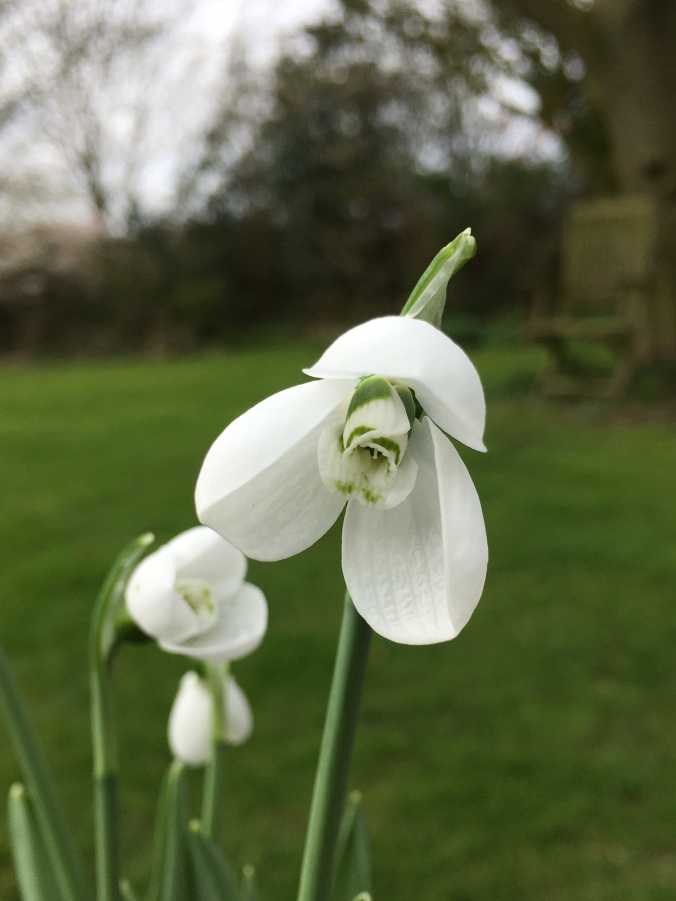By MONA ABBOUD
Published by Wood Vale Publishing
144 pages. RRP £9.99
ISBN 978-1-5272-5591-3
Please leave a comment below to be included in the draw for a copy of the book.

Having something beautiful to focus on is a blessing at the moment. This week I’m learning all about Corokias, thanks to a new book by passionate gardener Mona Abboud. Corokias are New Zealand plants with leaves that resemble Mediterranean olives. They can be grown as low hedges, as a replacement for box hedging that’s been ravaged by blight or box tree caterpillar. As well as being useful, they are quite beautiful with names such as Frosted Chocolate, Sunsplash, Red Wonder, Silver Ghost, and my favourite, Coco. The undersides of leaves are always silver, but the colour of the surface of the leaf can be plum, bronze, silver and yellow. There are also very pretty variegated leaves.

Corokia Sunsplash -lit up with tiny yellow flowers.
Corokias produce small star-like flowers in spring and pea-size red, orange or nearly black berries in autumn.

Mona has appeared on BBC1 and More4 with her much-acclaimed garden created in Muswell Hill, London. She has a collection of 40 species of corokia and is a Plant Heritage National Collection holder. Her unusual and beautiful garden has won a gold medal from the London Gardens Society.

Mona has travelled all over the world in search of plants in what she describes as her “corokia adventure.” It’s impossible not to be caught up and swept along by her enthusiasm for these “largely unknown and undervalued” plants. Her passion for corokias endears her to growers and plant hunters in the uk and abroad. And it’s not surprising to hear her talk of being given rare and treasured plants and rooted cuttings of special varieties. Who could resist her. Mona’s enthusiasm is heartwarming and palpable.

Many of the photographs in Mona’s book come from her own remarkable garden. It’s amazing to see that the plants can be cloud pruned, topiarised, grown as parasols, or used as hedges and screens. I particularly like the idea of growing them as a multi-stem shrub, with spring bulbs and perennials as ground cover.



The well-illustrated book features sections on the history of corokias, uses and cultivation, the story of Mona’s garden, a study of her national collection and an in-depth description of the genus.
Mona’s determined quest to collect as many varieties as she could started in 2001 when she fell in love with Corokia x virgata Red Wonder growing in a friend’s garden by the sea in Suffolk. She says: “My passion for the genus has grown steadily since then, along with my collection, and this book is the latest manifestation of my evangelism for the genus.
“The aquisition of all forty currently available species and cultivars has certainly taken me on a fascinating and winding journey. ”
I highly recommend you join Mona on her journey via her stunning new book. It’s certainly an amazing adventure, and she is a lively and knowledgeable guide.
Books available from monasgarden.co.uk, and Amazon.
Please leave a comment below and names will be randomly selected for one free copy. So sorry, it’s uk only, due to postage costs.
Notes : Mona has written articles on corokias for the RHS magazines The Garden and The Plantsman, helping to spread the word about this attractive plant.
Monasgarden.co.uk : https://monasgarden.co.uk/?utm_source=monasgardencouk&utm_medium=web&utm_campaign=urlredirect






 My cut flower tulips are in bud. Tulips in the sunny front garden are already flowering early. I’ll cut a huge bunch of daffodils and tulips for the front windows. Vases of flowers will cheer up anyone passing by, even though they can’t call in to visit.
My cut flower tulips are in bud. Tulips in the sunny front garden are already flowering early. I’ll cut a huge bunch of daffodils and tulips for the front windows. Vases of flowers will cheer up anyone passing by, even though they can’t call in to visit.


























 Inside the composter there’s some bran, a scoop and and container to catch the liquid feed that comes from the tap.
Inside the composter there’s some bran, a scoop and and container to catch the liquid feed that comes from the tap.


























 The horseshoe pond can viewed from the potting shed windows. There’s a gently-sloping boulder beach to stand on, and this gives easy access for hedgehogs, frogs, newts and grass snakes. It’s very calming to stand and watch the ripples from raindrops. Today the pond is a cauldron of frogs, mating and producing frog spawn.
The horseshoe pond can viewed from the potting shed windows. There’s a gently-sloping boulder beach to stand on, and this gives easy access for hedgehogs, frogs, newts and grass snakes. It’s very calming to stand and watch the ripples from raindrops. Today the pond is a cauldron of frogs, mating and producing frog spawn.







